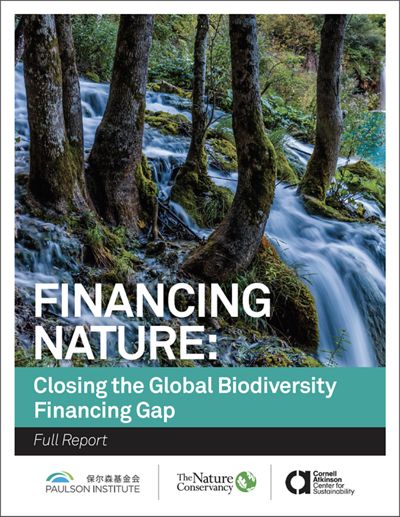Financing Nature Report

We need to be spending an additional $598-824 billion annually to reverse the biodiversity crisis by 2030—but much of that money can be found by changing existing spending flows.
The “Financing Nature” report offers the most comprehensive assessment to date on how much the world currently spends to benefit nature, how much more we need to be spending, and how we can close that nature funding gap now.


Download the Report "Financing Nature: Closing the Global Biodiversity Financing Gap"
The report, released by the Paulson Institute, The Nature Conservancy and the Cornell Atkinson Center for Sustainability, offers the most comprehensive assessment to date on how much the world currently spends to benefit nature, how much more we need to be spending, and how we can close that nature funding gap now.